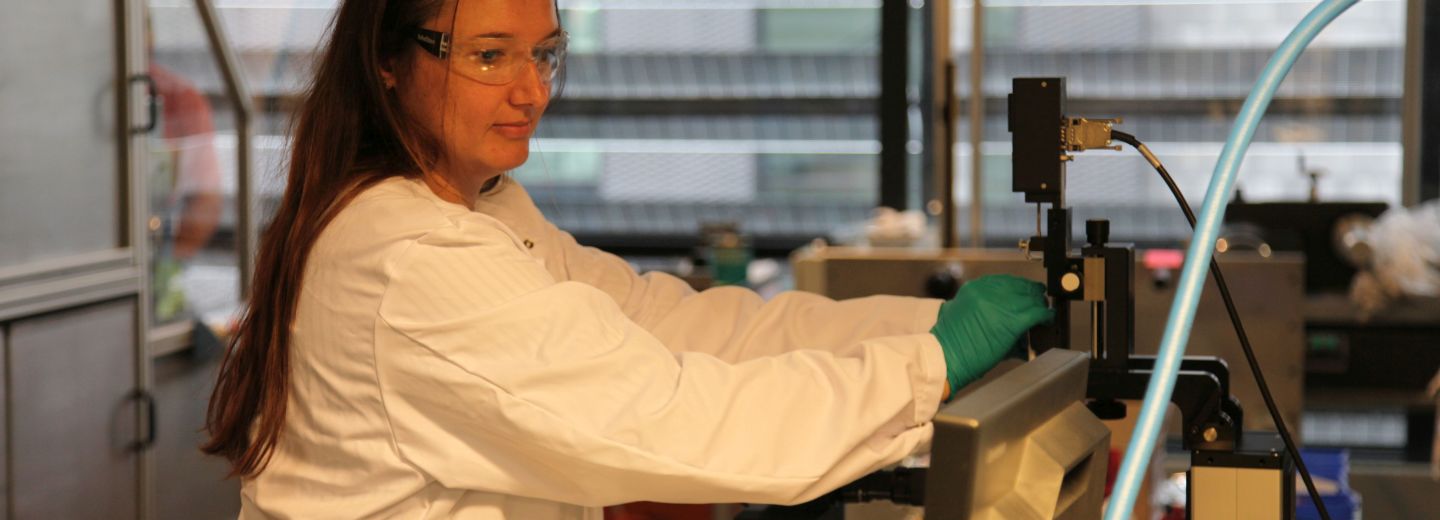
SDU researchers will keep an eye on dangerous bacteria
Researchers from SDU's campus in Sonderborg are working with Canadian colleagues to develop a warning system that can detect dangerous bacteria and viruses that emerge as permafrost melts in the Arctic. The SDU researchers bring in-depth knowledge of sensors and monitoring of bacteria.
The anthrax bacterium Bacillus anthracis is merciless. The first signs are otherwise easy to miss; a little itching, no worse than a mosquito bite. But then the fever hits. This is followed by abscesses, characteristic coal-black crusts, swollen lymph nodes and eventually death as patients' lungs fill with bloody fluid. In short, the victims are drowning in their own blood.
I 2016, rumours about the Siberian plague among reindeer nomads on the Siberian peninsula of Yamal emerged. Up to 2,300 reindeer died, 73 people were hospitalised and on Monday 1 August a 12-year-old boy died before the disease was identified as anthrax. Its origin was the thawing of a reindeer carcass, a victim of an anthrax outbreak way back in 1941.
The Siberian Times blamed zombie bacteria for the anthrax outbreak in 2016, because the anthrax spores had survived for so long. For 75 years, the bacteria were securely packed into the permafrost of the tundra landscape, but when a heatwave hit in the summer of 2016 with - for the Arctic - unfamiliar temperatures of 25-30 degrees, the snow and ice melted and the bacteria thawed.
The anthrax outbreak could be the first of many as microbes thaw and come to life when the northern hemisphere's 23 million square kilometres of permafrost melts as a result of global warming.
There is a latent threat in the form of old bacteria and viruses, which lie hidden in the permafrost and thaw out as the weather gets warmer and warmer. Surveillance of diseases in Arctic areas is therefore more important than ever.
In cooperation with colleagues in Canada, researchers from SDU will now look at various options so that they can eventually develop an alarm system that can detect viruses and bacteria that emerge from the frozen soil.
"We want to monitor water and soil near permafrost areas - all in real time, live," says associate professor Roana de Oliveira Hansen from NanoSYD at SDU.
Global warming thaws out bacteria and viruses
A 2018 Arctic report by NOAA's Pacific Marine Environmental Laboratory speculates that "diseases such as Spanish disease, smallpox and plague, which have otherwise been eradicated, may be found frozen in permafrost", while a 2014 French research project warmed up a 30,000-year-old virus found in permafrost. It came to life immediately, 300 centuries after it was frozen.
"The threat is real. The aim is therefore to develop some kind of alert system for the Arctic regions. Initially, however, this is a networking project to get to know each other better and see how we can best use each other's skills," says Roana de Oliveira Hansen.
Through a number of previous research projects, NanoSYD has built up extensive knowledge in live monitoring of bacteria and viruses, including testing of water in India's subsurface, and has also developed portable systems for the detection of chemical contamination. The centre's researchers are some of the foremost experts in the field. Roana de Oliveira Hansen has no doubt that the SDU researchers, together with the established network of researchers and the commercial partner, Copenhagen Nanosystems (CPH Nano), will find the right solution to the problem and eventually develop a sensor that will be able to alert authorities if a dangerous bacteria or virus is detected.
But what happens if a sensor detects a potentially dangerous bacterium that is, say, 40,000 years old?
"An emergency plan must be drawn up on how to isolate the area and people in the immediate vicinity. We are lucky to have prof. Jennifer Baltzer in our networking activity. She studies the influence of melting permafrost in the Arctic ecosystem and is one of the leading specialists in the field," says Roana de Oliveira Hansen.
The researchers have initially planned two workshops. Here, the researchers will identify the bacteria they want to keep a close eye on and discuss which sensor technologies are best suited to the task. The aim is for the network project to lead to three further projects, where the focus will be on developing the necessary technology.
The project has received DKK 350,798 from the Ministry of Higher Education and Science's Global Innovation Network Programme (GINP). In addition to SDU, the project includes McMaster University in Canada (MMU), Wilfrid Laurier University in Canada (WLU) and Copenhagen Nanosystems (CPH Nano).